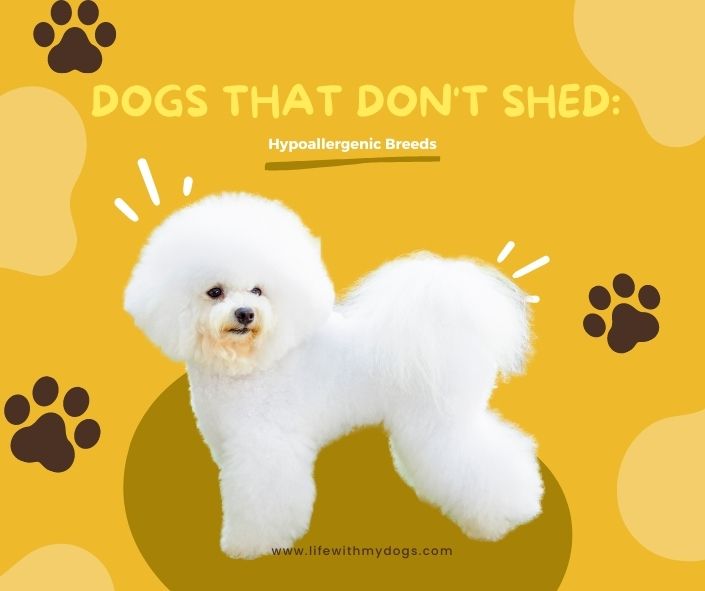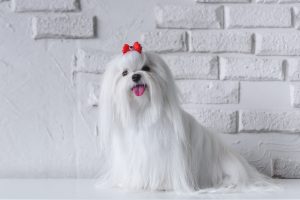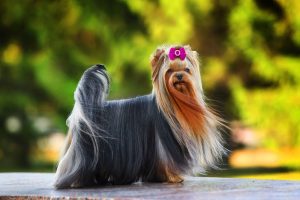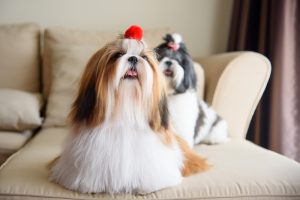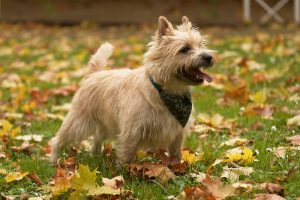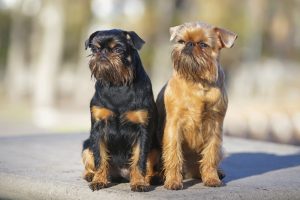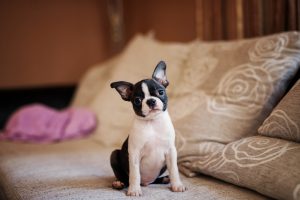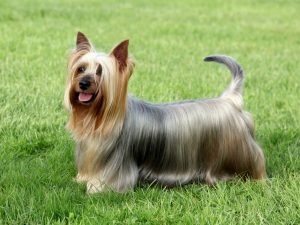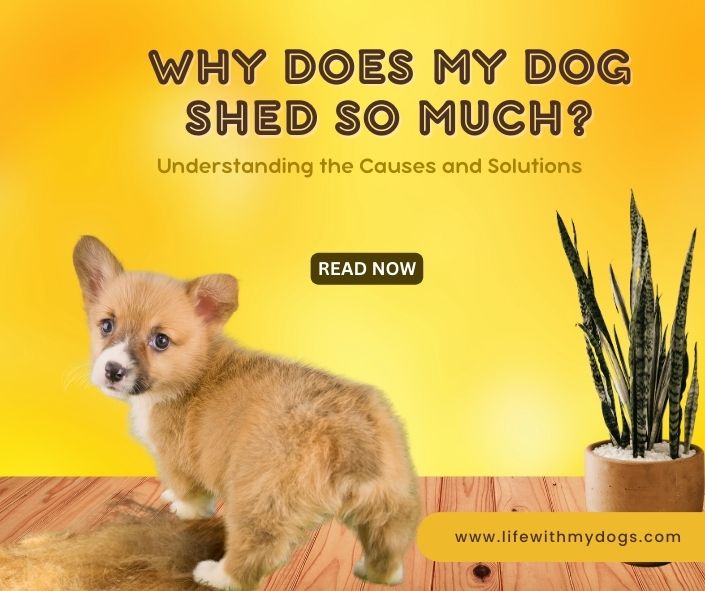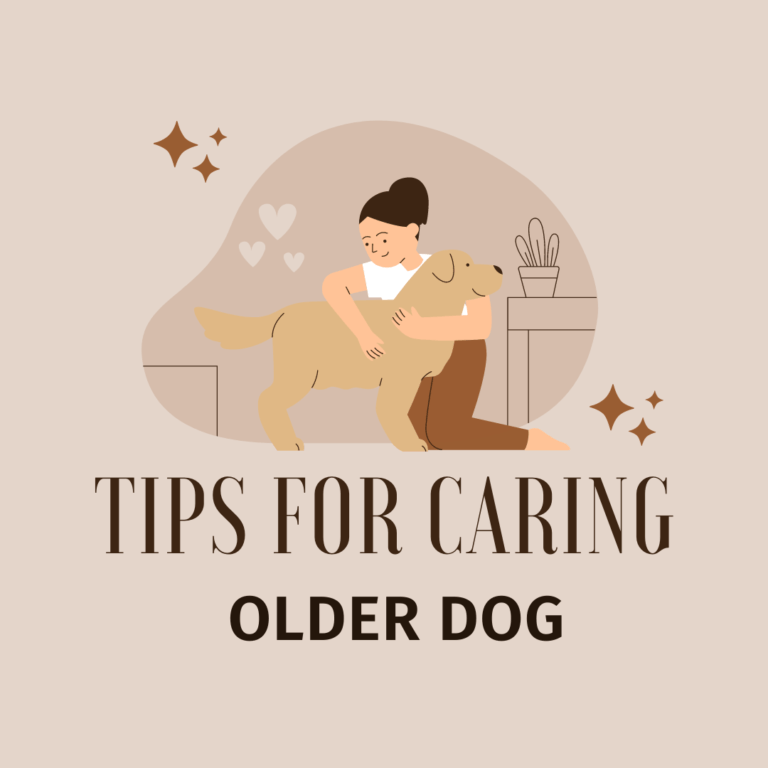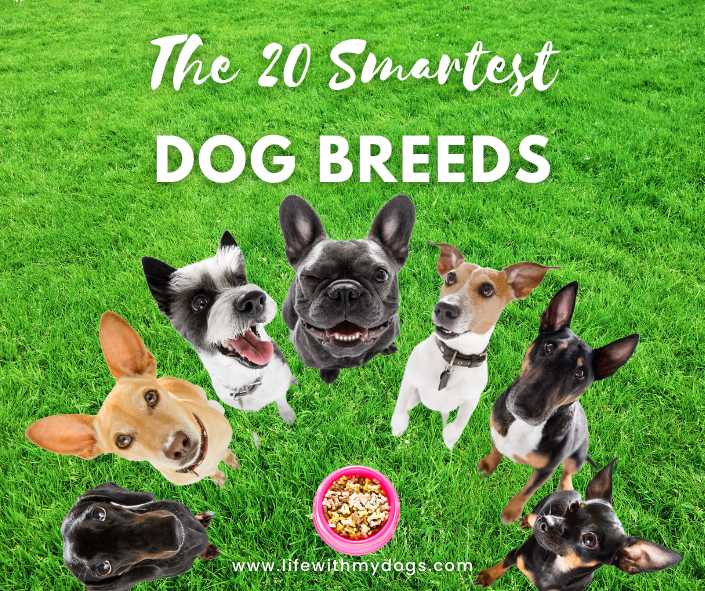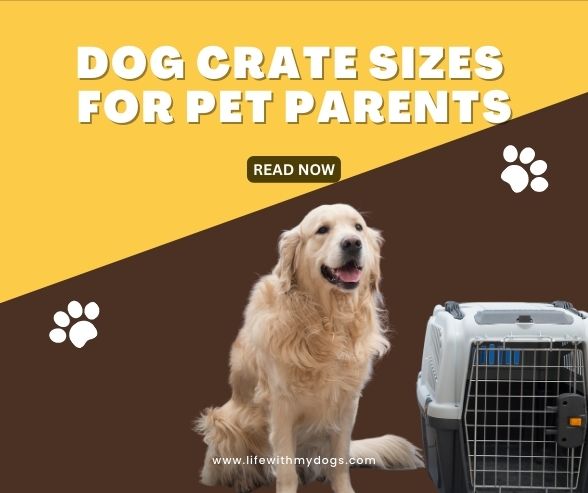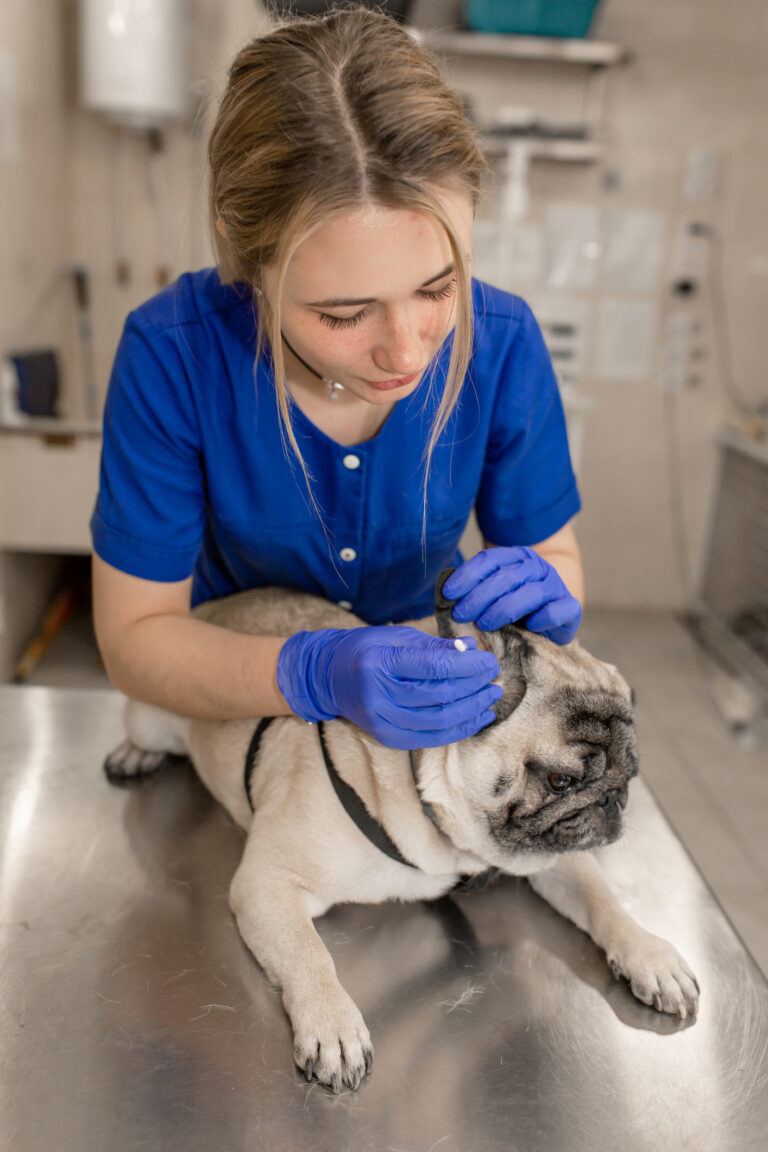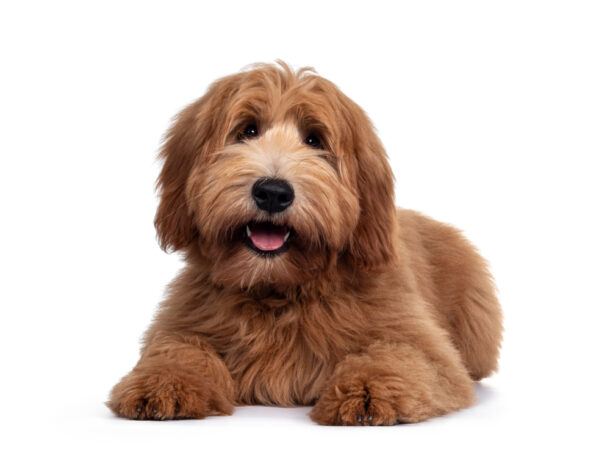Dogs That Don’t Shed: Hypoallergenic Breeds
LifeWithMyDogs is supported by our audience. When you purchase through one of our links, we may earn a small affiliate commission. As an Amazon Associate I earn from qualifying purchases. Your cost is not affected.
**********
Love dogs but find you are allergic to them? Pet allergies do not mean you cannot have a pet. Despite allergies, many people find ways to have a pet to cuddle and love. One way is to choose among the breeds of dogs that don’t shed. Often called hypoallergenic breeds, these dogs need to have their hair clipped or shaved so they don’t shed. Other possible breeds do shed, but much less.
Dogs That Don’t Shed: A Comprehensive Guide to Hypoallergenic Breeds
Looking for a furry friend but not a fan of cleaning up pet hair? You’re in luck! There are plenty of dog breeds that don’t shed or shed very little, making them perfect for allergy sufferers or those who prefer a low-maintenance pet. These dogs come in all shapes and sizes, from small lap dogs to larger breeds. When choosing a dog that doesn’t shed, it’s essential to do your research.
While many breeds are touted as “hypoallergenic,” no dog is genuinely 100% hypoallergenic. However, certain breeds produce less dander and shed less hair, making them more tolerable for people with allergies. Additionally, it’s important to note that dogs that don’t shed much still require regular grooming to keep their coats healthy and mat-free.
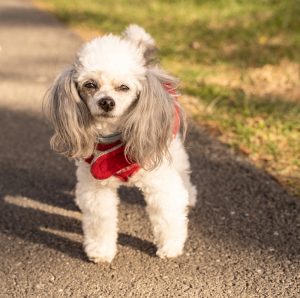
Understanding Dog Shedding
If you’re considering getting a dog, you should know that shedding is a natural and common occurrence in many breeds. Shedding is a process where dogs lose old or damaged hair for new hair growth. While shedding is expected, some dogs shed more than others, which can cause issues for people with allergies or who are sensitive to pet dander.
Pet dander is tiny flakes of skin that dogs and other animals shed, and it can cause allergic reactions in some people. If you’re allergic to dogs, knowing there’s no such thing as a completely hypoallergenic dog breed is essential. However, some breeds shed less than others, making them a better fit for people with allergies.
If you’re concerned about dog shedding, there are a few things you can do to manage it. Regular grooming is essential for all dogs but can benefit dogs that shed a lot. Brushing your dog’s coat regularly can help remove loose hair and prevent it from spreading throughout your home. If you’re particularly sensitive to pet dander, consider using an antihistamine or other allergy medication. These can help alleviate allergy symptoms and make it easier to live with a dog. However, talking to your doctor before taking any medication is essential, as some can have side effects or interact with other medicines.
In summary, shedding is a natural process that most dogs go through. But some breeds shed more than others. If you’re concerned about dog shedding, there are steps you can take to manage it, such as regular grooming and using allergy medication if needed. Or, choose from the breeds of dogs that don’t shed.
What Makes a Dog Hypoallergenic
You might have heard about hypoallergenic dogs if you’re an allergy sufferer. These dogs are often recommended for people with allergies because they produce fewer allergens than other dogs. But what makes a dog hypoallergenic?
There is no such thing as a completely hypoallergenic dog. However, certain breeds are less likely to cause allergic reactions in people. The main reason is that they shed less, producing less dander, saliva, and urine – all of which can trigger allergic reactions. When a dog sheds, it releases dander into the air. Dander is made up of tiny flakes of skin that can cause allergic reactions in people. Saliva and urine can also contain allergens that can cause problems for allergy sufferers. Hypoallergenic dogs produce fewer allergens, making them a better choice for people with allergies. It’s important to note that not all hypoallergenic dogs are the same. Some dogs may still produce enough allergens to cause problems for some allergy sufferers.
If you’re considering getting a hypoallergenic dog, it’s a good idea to spend some time with the breed first to see if you have any allergic reactions. In addition to shedding less, hypoallergenic dogs may also have other characteristics that make them less likely to cause allergic reactions. For example, they may have a different coat type or produce less saliva than other dogs. Some common hypoallergenic dog breeds include Poodle, Bichon Frise, and Maltese.
While hypoallergenic dogs are not entirely allergy-free, they can be a good option for people with allergies. If you’re considering getting a dog and have allergies, research hypoallergenic breeds and spend time with them to see if they fit you. Also, many allergy sufferers find that they tend to build some resistance to the allergens from their dogs over time. It does take time to build immune resistance. And it’s easier with a non-shedding breed. But it might provide the answer that allergy-prone dog lovers need.
Non-Shedding Vs. Low-Shedding Dogs
When finding a dog that doesn’t shed, you may come across terms like non-shedding and low-shedding. But what do these terms mean
Non-shedding dogs are those that do not shed their fur at all. These dogs have hair instead of fur, and their hair grows continuously, much like human hair. Examples of non-shedding dog breeds include the Poodle, Bichon Frise, and Shih Tzu. However, it’s important to note that while non-shedding dogs may not shed their fur, they still require regular grooming to prevent matting and tangling.
On the other hand, low-shedding dogs are those that shed very little. These dogs have fur that grows to a certain length and then stops, and they typically shed less dander and hair than other breeds. Examples of low-shedding dog breeds include the Maltese, Yorkshire Terrier, and Portuguese Water Dog. However, it’s important to note that low-shedding dogs may still trigger allergies in some people, as they can be caused by dander, saliva, urine, and hair.
It’s important to remember that while non-shedding and low-shedding dogs may be a good fit for people with allergies, it’s not a guarantee that they won’t cause an allergic reaction. Additionally, both non-shedding and low-shedding dogs require regular grooming to maintain their coat and prevent matting and tangling.
In summary, non-shedding dogs do not shed their fur, while low-shedding dogs shed very little. Both types of dogs can be a good fit for people with allergies, but it’s important to remember that allergies can be caused by more than just hair. Regular grooming is also essential for both dogs to maintain their coat and prevent matting and tangling.
Related: Dog Breeds That Don’t Shed, Toy Dogs
Small Dogs That Don’t Shed
You have several options if you are looking for a small dog that doesn’t shed. Some of the most popular small breeds that don’t shed include Toy and Miniature Poodles, Bichon Frise, Maltese, Yorkshire Terrier, Lhasa Apso, Shih Tzu, Cairn Terrier, Brussels Griffon, Boston Terrier, and Australian Silky Terrier.
Poodle (Toy and Miniature)
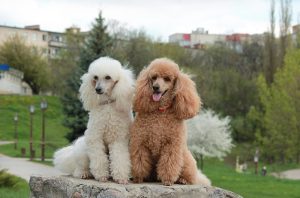
Poodles come in 3 main varieties, toy, miniature, and standard. The toy and miniature types stay small, ideal for apartments and smaller homes. Many older people prefer the poodle in smaller sizes, too. Their lamb’s wool-like coat needs regular grooming to prevent mats from forming. Many owners choose to plan professional grooming to keep up the coat. Poodles of any size make wonderful family pets. They happily reside with all ages and other pets.
Bichon Frise
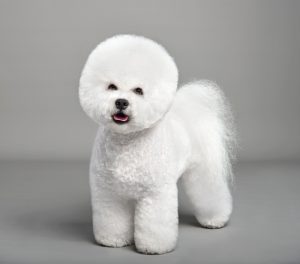
This small, friendly, and affectionate dog doesn’t shed much. Their soft and curly coat needs regular grooming to prevent matting and tangling. They make great family pets and get along well with children and other pets.
Maltese
The little white dog from Malta is another small breed that doesn’t shed much. Their long, silky, straight hair needs daily brushing to prevent matting and tangling. These intelligent, playful, and affectionate dogs make great companions for all ages.
Yorkshire Terrier
Also known as Yorkie, this small breed doesn’t shed much. Their long and silky coat needs regular grooming to prevent matting and tangling. They are energetic, playful, loyal dogs and make great family pets.
Lhasa Apso
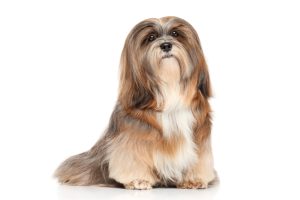
The Lhasa Apso is a small breed that doesn’t shed much. Their long and dense coat needs regular grooming as it is prone to prevent matting and tangling. They are independent, intelligent, and loyal dogs that make excellent watchdogs.
Shih Tzu
This small breed doesn’t shed much. They grow a long, dense coat that needs regular grooming to prevent matting and tangling. They are friendly, affectionate, and playful dogs that make great family pets.
Cairn Terrier
The Cairn is a small breed that doesn’t shed much. Their harsh and wiry coat needs regular grooming to maintain texture and prevent matting. They are intelligent, active, and playful dogs that make great companions.
Brussels Griffon
This is another small breed that doesn’t shed much. They grow a wiry, rough coat that needs regular grooming to prevent matting and tangling. They are intelligent, loyal, and affectionate dogs that make great family pets.
Boston Terrier
The Boston Terrier is a small breed that sheds very little. Their short and smooth coat needs minimal grooming. They are friendly, playful, and affectionate dogs that make great family pets. Seniors often choose them as the “gentleman’s dog.”
Australian Silky Terrier
The Silky Terrier, another of our small breeds, sheds very little. They have a long, silky coat that needs regular grooming to prevent matting and tangling. They are intelligent, active, and loyal dogs that make great companions. Overall, if you are looking for a small dog that doesn’t shed much, you have several options. It’s important to note that even though these breeds don’t shed much, they still need regular grooming to maintain their coat and prevent matting and tangling.
Related: Look For Dogs Good For Allergies and Children
Medium-Sized Dogs That Don’t Shed
You have plenty of options if you’re looking for a medium-sized dog that doesn’t shed. Here are some of the most popular breeds:
Schnauzer
Schnauzers come in three sizes: miniature, standard, and giant. All three sizes are known for their hypoallergenic coats, which shed very little. Schnauzers are also intelligent, loyal and make great family pets.
Scottish Terrier
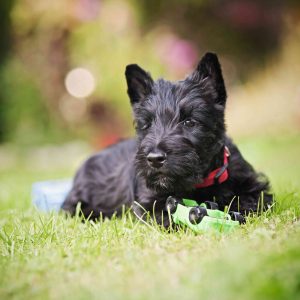
The Scottish Terrier, also known as the Scottie, is a small but sturdy breed that doesn’t shed much. They have a wiry coat that requires regular grooming, but shedding is not a big issue. Scottish Terriers are independent and can be stubborn, but they are also affectionate and make great companions.
Kerry Blue Terrier
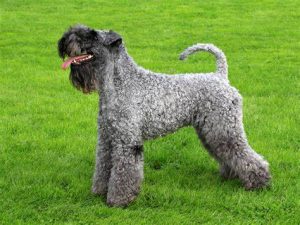
The Kerry Blue Terrier is a medium-sized breed that originated in Ireland. They have a soft, wavy coat that doesn’t shed much, making them a good choice for people with allergies. Kerry Blue Terriers are energetic, intelligent, and loyal but can also be strong-willed and require consistent training.
Wheaten Terrier
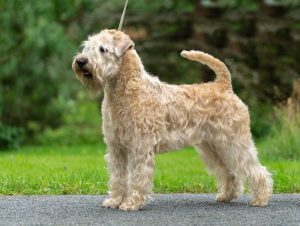
The Soft Coated Wheaten Terrier is a medium-sized breed with a soft, silky coat that doesn’t shed much. They are friendly and playful and make great family pets. However, their coat requires regular grooming to prevent matting and tangling.
Border Terrier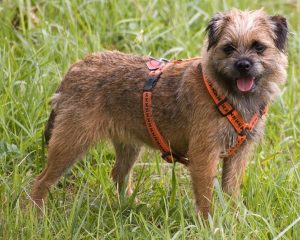
The Border Terrier is a small to medium-sized breed with a wiry coat that sheds very little. They are energetic and intelligent and make great companions. Border Terriers are also known for their love of digging, so be prepared for some landscaping challenges if you choose this breed.
Tibetan Terrier
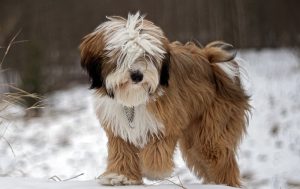
The Tibetan Terrier is a medium-sized breed with a long, thick coat that doesn’t shed much. They are affectionate and loyal and make great family pets. However, their coat requires regular grooming to prevent matting and tangling.
Labradoodle or Goldendoodle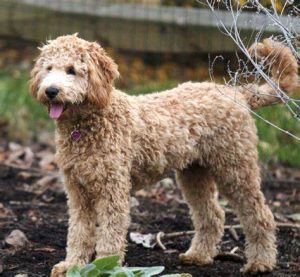
The Labradoodle is a crossbreed between a Labrador Retriever and a Poodle, and they come in various sizes, including medium. Labradoodles are known for their hypoallergenic coats, which shed very little. They are also friendly and intelligent and make great family pets. Overall, medium-sized dogs that don’t shed are an excellent choice for people with allergies or those who don’t want to deal with excessive shedding. However, remember that even hypoallergenic breeds require regular grooming to maintain their coats.
Related: Discover The Ways To Overcome Pet Allergies
Large Dogs That Don’t Shed
Looking for a large dog breed that won’t leave clumps of fur on your furniture? You’re in luck. Several of the large dog breeds don’t shed or shed very little. Here are some of the most popular ones:
Standard Poodle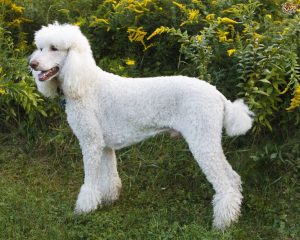
The Standard Poodle is a brilliant and elegant dog breed that is known for its hypoallergenic coat. They come in a variety of colors and are easy to train. Poodles require regular grooming to keep their coat in good condition, but they don’t shed much.
Afghan Hound
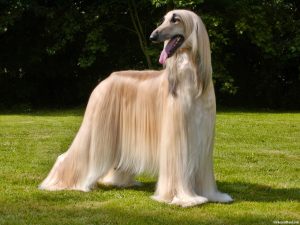
The Afghan Hound is a majestic dog breed known for its long, silky coat. Despite their luxurious coat, Afghan Hounds don’t shed much and are a good choice for people with allergies. However, their coat requires regular grooming to prevent matting.
Portuguese Water Dog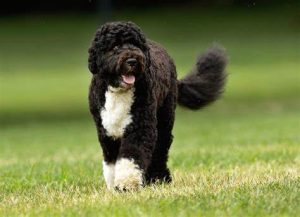
The Portuguese Water Dog is a friendly and active breed initially bred for fishing. They have a curly, hypoallergenic coat that doesn’t shed much. Portuguese Water Dogs require regular grooming to prevent matting and keep their coat in good condition.
Irish Water Spaniel
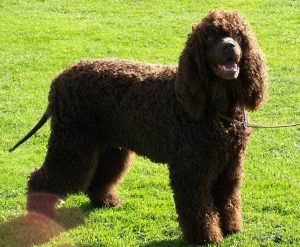
The Irish Water Spaniel is a playful, energetic dog breed known for its curly, hypoallergenic coat. They don’t shed much and are a good choice for people with allergies. However, their coat requires regular grooming to prevent matting.
Airedale Terrier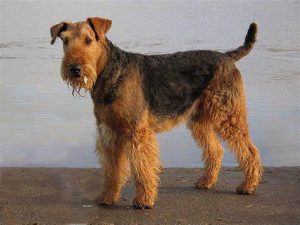
The Airedale Terrier is a loyal, intelligent dog breed known for its wiry, hypoallergenic coat. They don’t shed much and are a good choice for people with allergies. However, their coat requires regular grooming to prevent matting.
Komondor
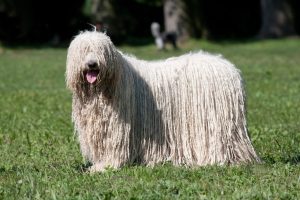
The Komondor is a unique, protective dog breed known for its corded, hypoallergenic coat. They don’t shed much and are a good choice for people with allergies. However, their coat requires a lot of maintenance to prevent matting.
Bouvier des Flandres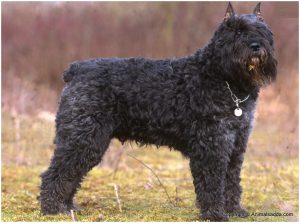
The Bouvier des Flandres is a robust and loyal dog breed known for its rough, hypoallergenic coat. They don’t shed much and are a good choice for people with allergies. However, their coat requires regular grooming to prevent matting.
Greyhound
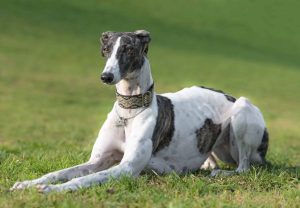
The Greyhound is a sleek, athletic dog breed known for its short, smooth coat. They don’t shed much and are a good choice for people with allergies. However, their coat still requires regular grooming to keep them in good condition.
Bullmastiff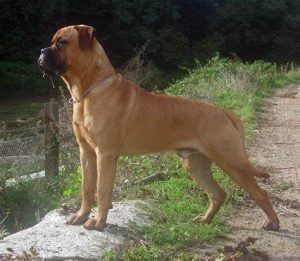
The Bullmastiff is a gentle and loyal dog breed known for its short, dense coat. They don’t shed much and are a good choice for people with allergies. However, their coat requires regular grooming to keep them in good condition. These large dog breeds that don’t shed or shed very little are an excellent choice for people with allergies or those who don’t want to deal with excessive shedding. Remember that even hypoallergenic dogs require regular grooming to keep their coat in good condition.
Related: Why Does My Dog Shed So Much? Understanding the Causes and Solutions
Hairless Dog Breeds
Consider a hairless breed if you’re looking for a dog that doesn’t shed. Hairless dog breeds are unique and can make excellent pets for those with allergies or who don’t want to deal with shedding. Here are a few hairless dog breeds to consider:
Chinese Crested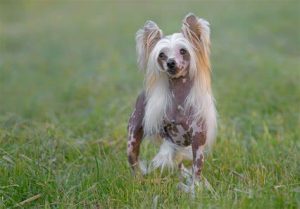
The Chinese Crested is a small, hairless dog breed in two varieties: hairless and powderpuff. The hairless variety has smooth, soft skin and tufts of hair on its head, tail, and feet. The powderpuff type has a full coat of soft, silky hair. Both types are hypoallergenic and don’t shed much, making them a good choice for people with allergies.
Xoloitzcuintli
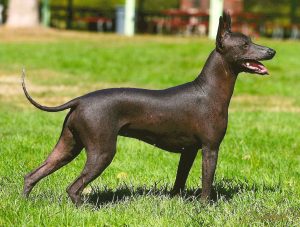
The Xoloitzcuintli, also known as the Mexican Hairless, is a unique-looking dog breed in three sizes: toy, miniature, and standard. They have smooth, hairless skin that can be any color. They require regular grooming to keep their skin healthy and clean despite their hairlessness. Like the Chinese Crested, they are hypoallergenic and don’t shed much.
American Hairless Terrier
The American Hairless Terrier is a small, energetic dog breed that is completely hairless. They are friendly and intelligent and make excellent pets for families with children. They are also hypoallergenic and don’t shed much, making them a good choice for people with allergies.
Peruvian Inca Orchid
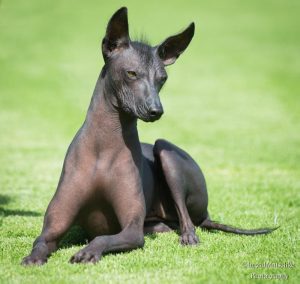
The Peruvian Inca Orchid is a unique-looking dog breed in three sizes: small, medium, and large. They have smooth, hairless skin that can be any color. They are intelligent and loyal and make excellent pets for families. Like the other hairless breeds on this list, they are hypoallergenic and don’t shed much. Hairless dog breeds can make excellent pets for those with allergies or who don’t want to deal with shedding. If you’re considering a hairless breed, be prepared to provide regular grooming to keep their skin healthy and clean.
Related: Dog Bathing Tips and Tricks: The Key to a Successful Dog Bath
Grooming Dogs That Don’t Shed
Grooming dogs that don’t shed can differ slightly from grooming dogs that do. While non-shedding dogs don’t leave hair all over your furniture and clothes, they still need regular grooming to keep their coat healthy and free of tangles. Daily brushing is one of the most important things to remember when grooming a non-shedding dog. Even though these dogs don’t shed, their hair can become tangled and matted if not brushed regularly.
Use a slicker brush to remove tangles and mats and a comb to smooth the coat. You may need extra grooming care if your non-shedding dog has a curly coat. Curly coats can quickly become matted if not brushed regularly. Use a detangling spray and a comb to work out any tangles gently. Ensure thoroughly dry your dog’s coat after bathing to prevent matting. While non-shedding dogs don’t require as much grooming as shedding dogs, they must be cleaned periodically. Use a mild shampoo and conditioner made specifically for dogs to keep their coat healthy and shiny.
In summary, grooming dogs that don’t shed requires regular brushing, exceptional attention to curly coats, and periodic bathing. You can keep your non-shedding dog looking and feeling great with a little effort.
Related: Dog Hair On Clothing and More
Choosing the Right Non-Shedding Dog
When choosing a non-shedding dog, there are several factors to consider. You want to find a breed that fits your lifestyle and personality and is hypoallergenic if you or someone in your household has allergies. Here are some tips to help you choose the right non-shedding dog for you:
Consider Your Lifestyle:
Some non-shedding dogs are more active than others, so choosing a breed that fits your lifestyle is essential. For example, a Havanese or Bolognese may be a good choice if you’re looking for a companion dog that will be content to snuggle on the couch with you all day. On the other hand, if you’re looking for a dog that can keep up with you on long hikes or runs, a Bedlington Terrier or Spanish Water Dog may be a better fit.
Research the Breed:
Each non-shedding breed has its unique characteristics and personality traits. For example, Dandie Dinmont Terriers are known for being independent and strong-willed, while West Highland White Terriers are friendly and outgoing. Research the breed thoroughly to ensure it fits you and your family well.
Consider Grooming Needs:
While non-shedding dogs don’t shed as much as other breeds, they still require regular grooming to keep their coat healthy and clean. Some breeds, like the Briard and Puli, have long, curly coats that require regular brushing and trimming. Others, like the Barbet and Mud Dog, have shorter coats that are easier to maintain.
Think About Allergies:
Choosing a hypoallergenic breed is crucial if you or someone in your household has allergies. While no dog is entirely hypoallergenic, breeds like the Bedlington Terrier and Saluki produce less dander than others, making them a good choice for allergy sufferers. In summary, choosing the right non-shedding dog requires careful consideration of your lifestyle, the breed’s characteristics and personality traits, grooming needs, and potential allergies. You can find the perfect non-shedding companion for you and your family by researching and choosing a breed that fits your needs.
Related: Discover The Ways To Overcome Pet Allergies
Other Non or Low-Shedding Dog Breeds
Apart from the popular non-shedding dog breeds, there are several other breeds that you may want to consider if you’re looking for a furry companion that doesn’t shed much. Here are some other non-shedding dog breeds that you might want to check out:
- Basenji: This breed is known for its short, fine coat that sheds very little. Basenjis are also hypoallergenic, making them an excellent choice for people with allergies.
- Coton de Tulear: This breed has a long, cotton-like coat that doesn’t shed much. They are also hypoallergenic and have a friendly, affectionate personality.
- Affenpinscher: These small dogs have a wiry, dense coat that doesn’t shed much. They are also hypoallergenic and make great companions for people who live in apartments.
- Lagotto Romagnolo: This breed has a curly, woolly coat that doesn’t shed much. They are also hypoallergenic and are known for their intelligence and trainability.
Remember, even though these breeds are considered non-shedding, they still require regular grooming to keep their coats healthy and tang-free. Also, remember that every dog is different; some may shed more than others, even within the same breed.
Related: Best Dog Bathtubs for Home Use
Your Furry, Low-Shedding Match Awaits!
In our exploration of hypoallergenic dog breeds, we’ve uncovered a range of options for those seeking a companion with minimal shedding. These breeds, varying in size and personality, offer the joy of dog ownership without the constant battle against allergies. From playful pint-sized pals to majestic giants, a hypoallergenic breed is perfect for you. Remember to consider factors like exercise needs and grooming requirements, and embrace responsible pet ownership. So go forth, find your hypoallergenic match, and let the adventures begin!
Frequently Asked Questions
Dogs shed their fur as a natural process of losing old or damaged hair and replacing it with new growth. Changes in the environment, seasonal changes, and hormonal changes can also influence shedding.
Not all Doodles are non-shedding. While many Doodles are bred specifically for their low-shedding coats, there is no guarantee that a particular Doodle will not shed. Researching the breed and breeder is essential to determine the likelihood of shedding.
Most dogs shed year-round, but some breeds may have a more noticeable shedding cycle during certain times of the year. For example, dogs with thick coats may shed more in the spring and fall as they prepare for the changing seasons.
Yes, dogs can shed more when they are stressed or anxious. This can be due to hormonal changes that affect the hair growth cycle.
Yes, some products help reduce shedding. These include specialized shampoos, conditioners, and brushes. These products can help to remove loose fur and keep the coat healthy, reducing shedding. Also, check your dog’s nutrition if you see excessive shedding. A lack of certain nutrients often causes shedding and other physical issues.
Some nutrient deficiencies that cause excess shedding in dogs:
- Vitamin A deficiency can cause dry, coarse hair that sheds excessively and mats quickly. Other essential vitamins and minerals include B-group, C and E, and zinc. One of the symptoms of zinc deficiency is excessive hair loss!
- Omega-3 fatty acids are essential for healthy skin and coat. A deficiency in these fatty acids can lead to dry, itchy skin and excessive shedding.
- Protein is also essential for healthy skin and coat. A protein deficiency can lead to hair loss, dull coat, and skin problems.
- Other nutrients contributing to excess shedding include copper, biotin, and iron.
Shaving a dog’s coat can cause more shedding by disrupting the natural hair growth cycle. Consult a professional groomer or veterinarian before shaving a dog’s coat.
Connect with Us on Social Media: Your Gateway to a Dog-Loving Community
Join our vibrant dog-loving community on social media! Discover captivating content, insightful product reviews, and connect with fellow dog enthusiasts.
Follow us on:
- Facebook: Engaging posts, helpful tips, and a thriving community dedicated to dogs and their care.
- Instagram: Stunning visuals, heartwarming moments, and exclusive behind-the-scenes glimpses into our dog-filled world.
- Pinterest: A treasure trove of inspiration, dog care ideas, and creative DIY projects to enhance your furry friend’s life.
- Twitter: Stay up-to-date with the latest dog-related trends, news, and lively discussions with fellow dog enthusiasts.
Connect with us, indulge in your love for dogs, and become part of a passionate community that celebrates all things canine. We can’t wait to share the joy of life with dogs with you!
Related Reading


